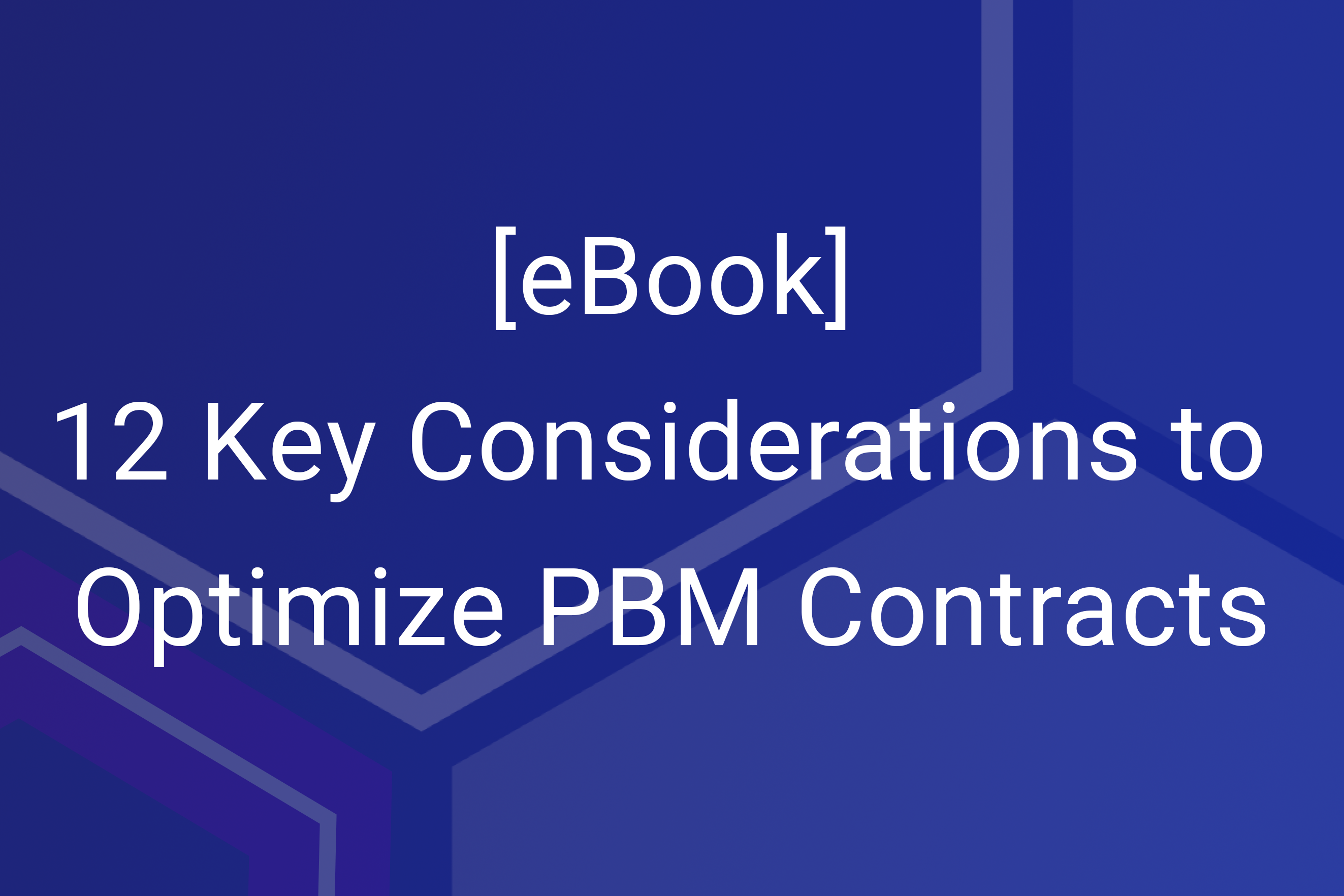Increasingly, we see the pressure that specialty drugs place on self-funded employers’ pharmacy budgets. Traditional cost-containment strategies — copay assistance programs, specialty tiers, and access restrictions such as prior authorization — can help to curb costs, but there’s only so far a plan sponsor can take these programs before employees and members become dissatisfied or confused about their coverage.
Benefit provider strategies like specialty formularies and limited distribution networks can be effective, but the nuances and impact of these on a contract can also be challenging to manage.
In the absence of a productive solution, specialty drug spending continues to escalate, gaining momentum from a complex and intertwined set of market dynamics. The old strategies to manage prescription costs aren’t enough to bend the cost curve and employers and plan sponsors can’t control market dynamics. But there are ways they can better manage their pharmacy program and take greater control of their pharmacy strategy.
So how should plan sponsors approach this complicated landscape? It’s no secret that employers want to be more informed. It starts with understanding the approaches and programs available, including innovative options like copay maximizers, accumulator adjustment programs, alternative funding, and multi-vendor strategies.
3 Innovative Strategies to Control Specialty Pharmacy Spend
1. Consider implementing a copay-assistance program
Manufacturers’ coupon programs effectively shift utilization to non-preferred or high-cost alternatives and can be useful in mitigating members’ out-of-pocket prescription expenses. In recent years, PBMs have introduced programs to help plan sponsors make high-cost prescriptions more affordable via the benefit. Either copay accumulators or copay maximizers can be built into any tiered pharmacy benefit design, and their effectiveness is largely dependent on your organization’s unique utilization trends and plan design.
In short:
- Copay accumulators spare plan sponsors from some of the costs of specialty drugs. Accumulators are an accounting technique in which the value of copay-assistance cards does not count toward out-of-pocket costs that are applied to a patient’s deductible.
- Copay maximizer programs shift drug costs to the manufacturer by spreading the benefit of a copay-assistance card over the plan year. Copay maximizers protect patients from crushing out-of-pocket expenses while helping to prevent adherence challenges associated with copay accumulators that occur when the manufacturer benefit runs out.
Copay maximizers finally overtook accumulators in popularity back in 2021, but both are still gaining traction as copay assistance programs infiltrate benefit designs. The efficacy of either strategy relies on a firm understanding of the plan’s needs.

2. Consider a more custom benefits solution – using multiple vendors
It is time to take a hard look at your full-service PBM. What value are you getting from it? Where are there opportunities in your contract to drill down and find more savings? A multiple-vendor strategy introduces niche players focused on specific components of the pharmacy benefit and creates deeper competition during the bid process to drive better results for the plan. Two ways to execute this kind of strategy include:
- A specialty carve-out strategy absorbs management of these drugs from the PBM. In this scenario, a pharmacy benefit administrator (think “TPA,” but for specialty drugs) facilitates specialty-drug management.
- Outsourcing formulary and rebate management to a third-party to control costs and have more transparency and flexibility with that aspect of your plan.
- There are also third parties that specialize in alternative funding arrangements, which shift drug costs away from the plan sponsor by introducing other means of access, through grants or philanthropic organizations.
3. Evaluate other potential alternative funding options
There are several alternative vendor models for securing necessary drugs and reducing part or all of the financial burden that specialty medications have on your overall pharmacy spend (a burden that is substantially higher than non-specialty drugs). Here are a few of them:
- Federal or state pharamceutical assistance programs (PAP), such as the 340B Program for low-income communities, can sometimes reduce or eliminate the cost of medication with a successful application for assistance from an alternative funding program and the patient.
- Foundations or charitable nonprofits can make it possible to ease the patient’s financial burden with a referral to a philanthropic group from an alternative funding program.
- Organizations are increasingly looking to able to obtain needed drugs from international drug sources, where they may sometimes be cheaper than specialty drugs that from a domestic source.
Maximize upside, minimize downside
These are among some of the disruptive approaches that can help to drive competition, control specialty pharmacy spend, and improve price transparency. In an environment impacted by many dynamics, it’s imperative to understand emerging options to be in the best possible position to nimbly anticipate and control specialty pharmacy costs. This starts with understanding the approaches and programs available to you and is followed by understanding the trends in your unique member utilization data so you can properly evaluate the impact of these options to make the most informed decisions about your benefits and overall healthcare spend.







